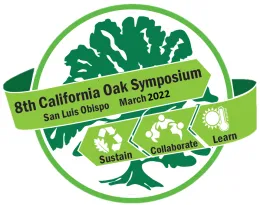#15

Brenna Castro Carlson, PLA, ASLA, Atlas Lab Inc. Work completed while at the University of California, Berkeley.
As climate change drives migration of California oaks, habitat connectivity will be a critical determinant of migration success. Urban land use can be a barrier to migration and gene flow due to habitat loss and fragmentation. This project proposes an approach for the design and planning of urban habitat networks to facilitate climate-driven oak migration – a function that is currently not a typical goal of urban open space planning – focusing on valley oak (Quercus lobata Née) in the Sacramento metropolitan area.
We mapped potential valley oak migration through species distribution modeling for current (2020) and near-future (2070) habitat suitability in California. Directional changes in suitability are summarized for the Sacramento region as a migration trajectory vector. Within the region, the suitable range for valley oak is projected to shift by 536m per year to the northeast – a rate which may exceed dispersal capabilities for the species.
We overlaid this trajectory with detailed mapping of the existing habitat network in Sacramento to identify potential migration routes through the metropolitan area. We applied two modes of connectivity analysis: Circuitscape to visualize potential connections between habitat patches, followed by Graphab to identify functional connectivity based on dispersal thresholds. We analyzed connectivity of the existing habitat network, then designed and analyzed three scenarios for new habitat, and finally designed and analyzed a hybrid scenario to optimize connectivity. The optimized scenario projects a twofold increase in valley oak habitat connectivity compared to baseline conditions. This project demonstrates an approach to habitat connectivity modeling that may be used in urban land use planning, and the habitat master plan envisions an urban open space network that supports and protects regional biodiversity in the face of climate change.
